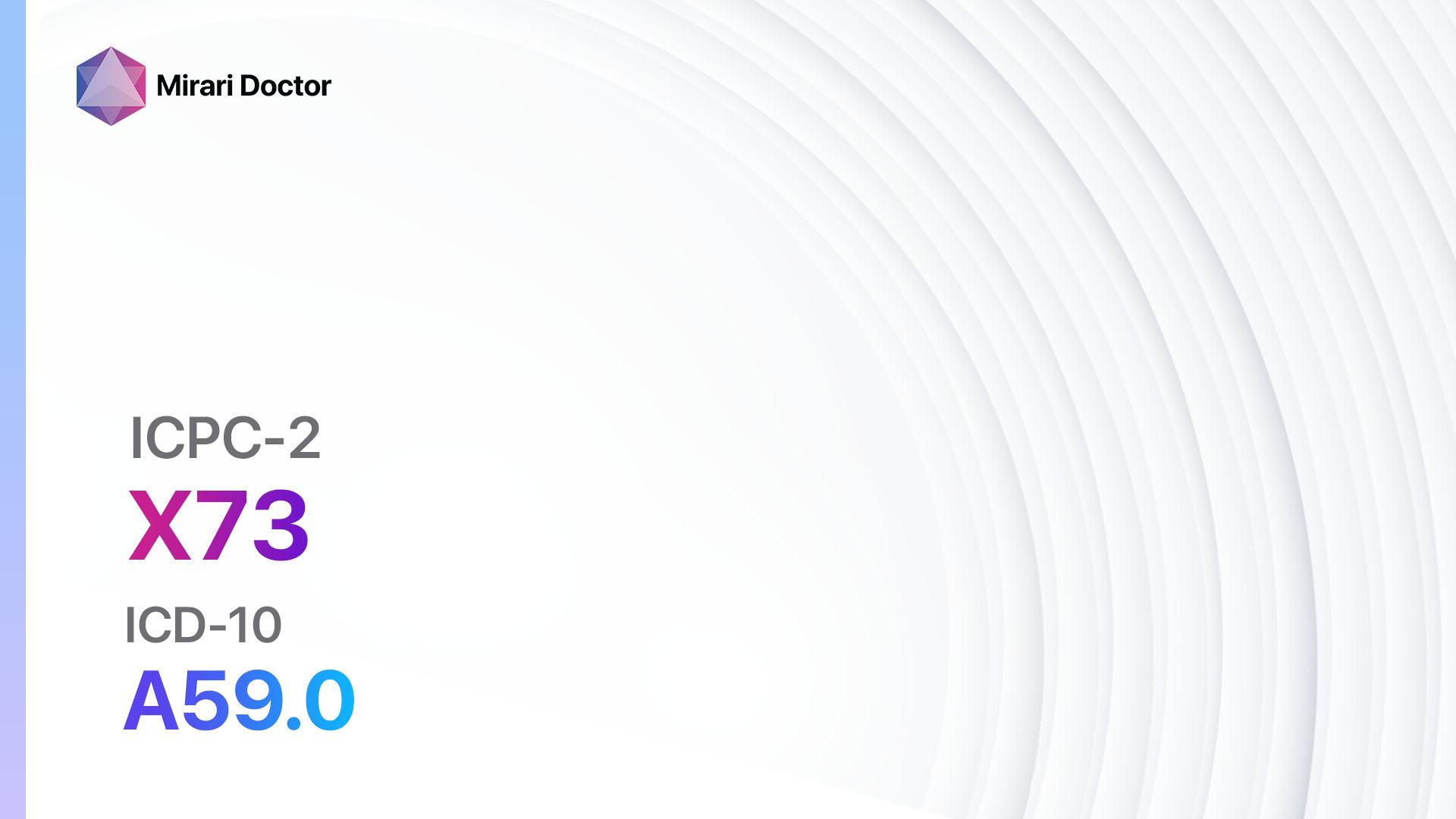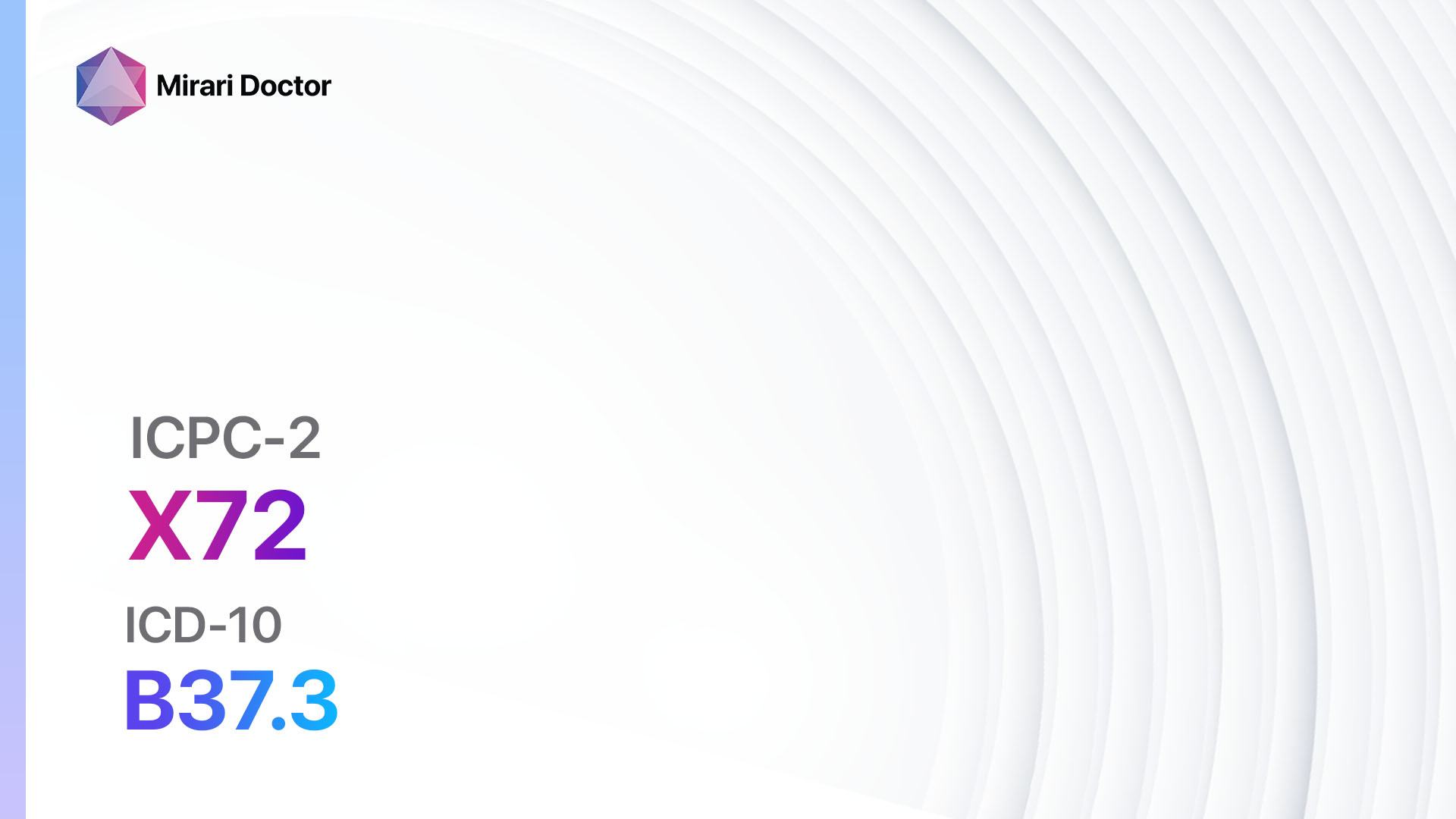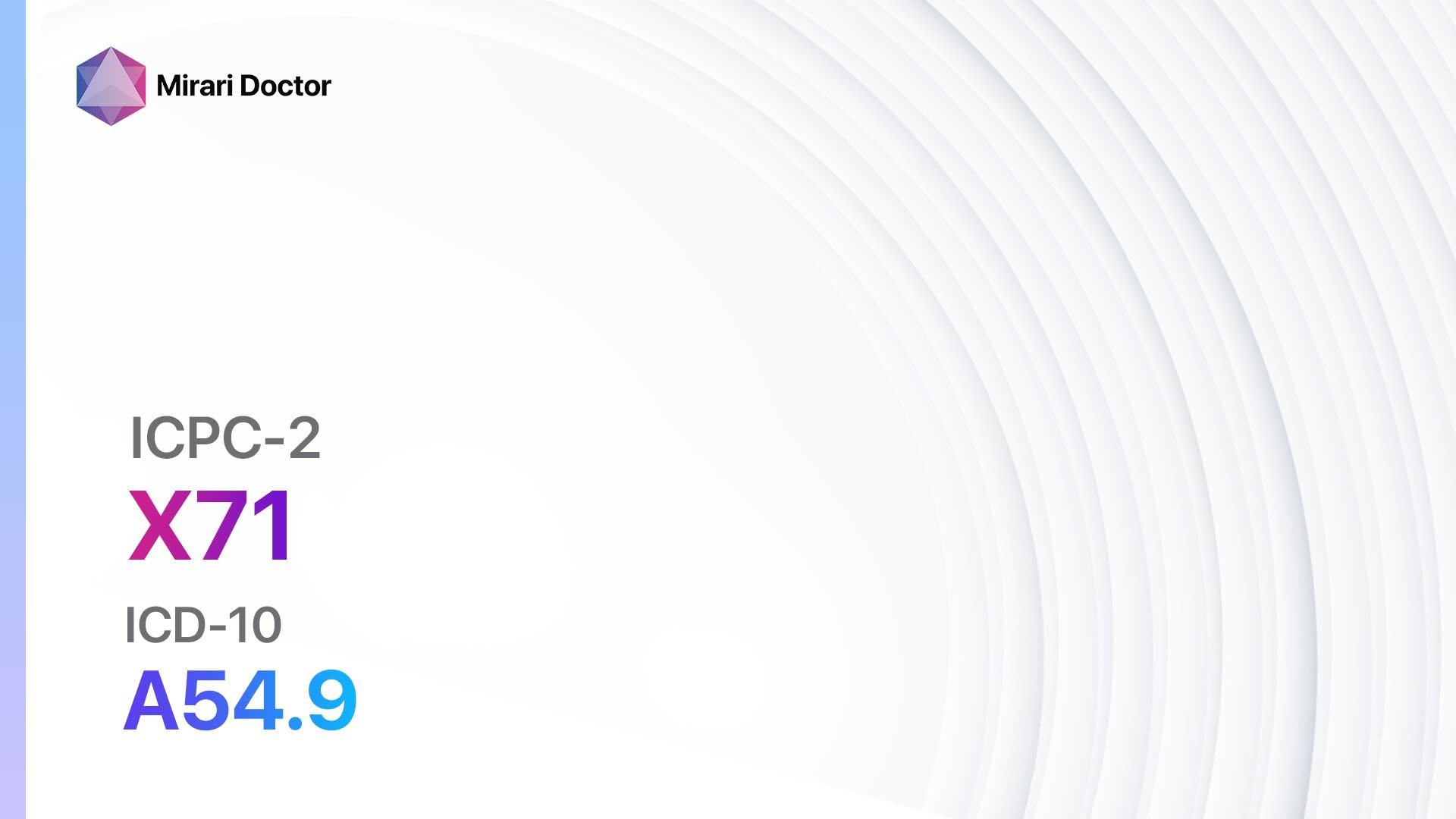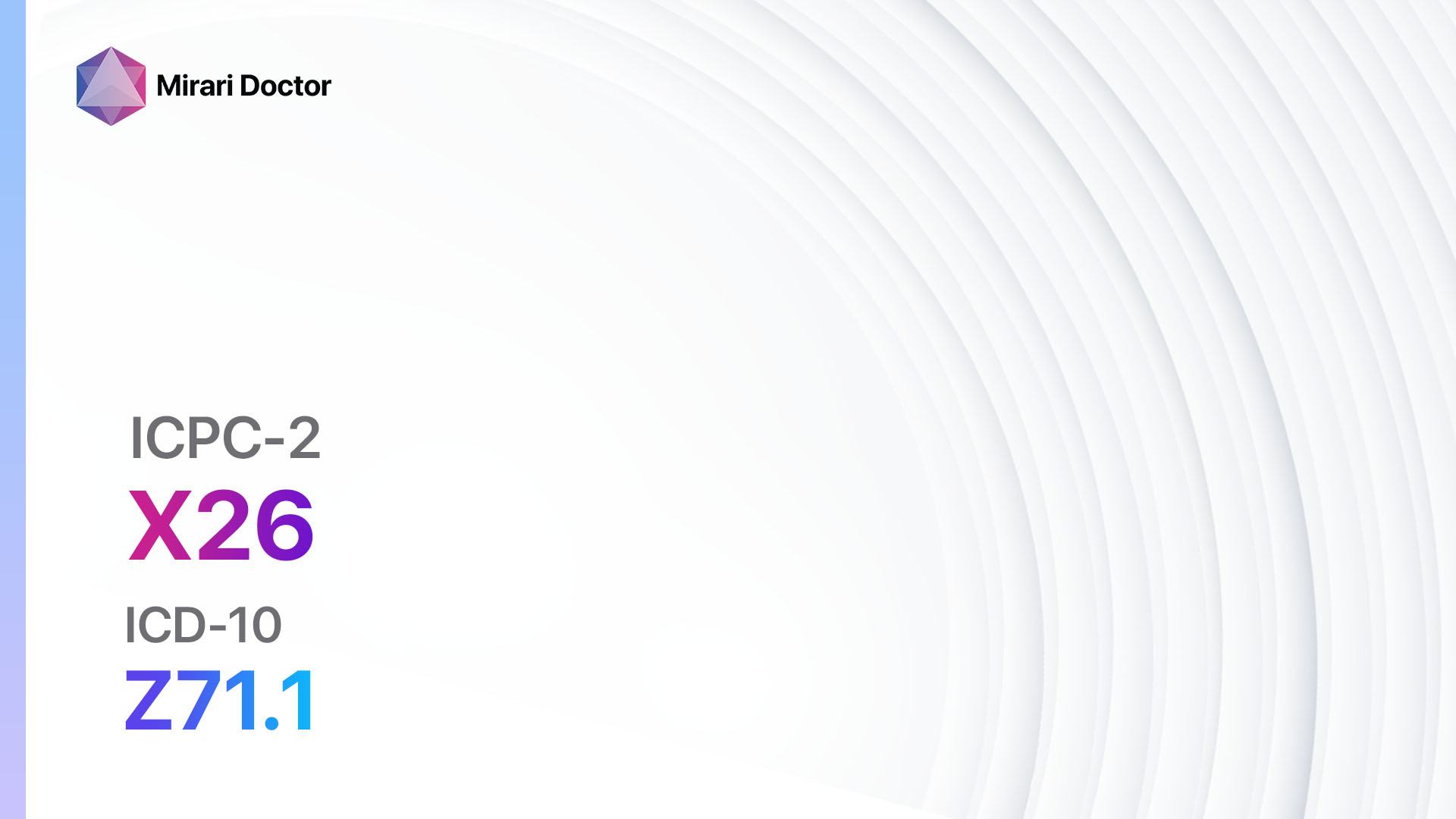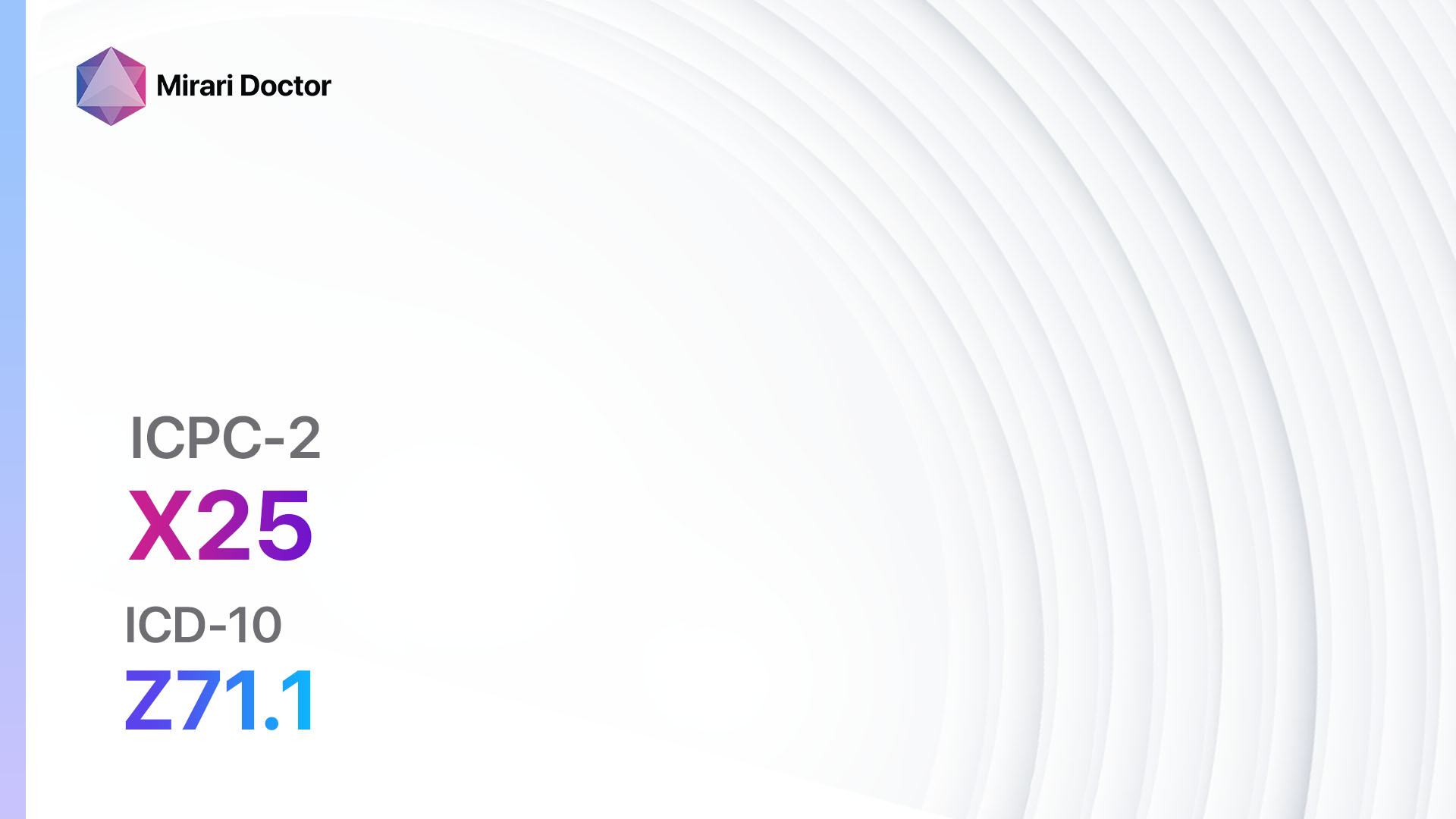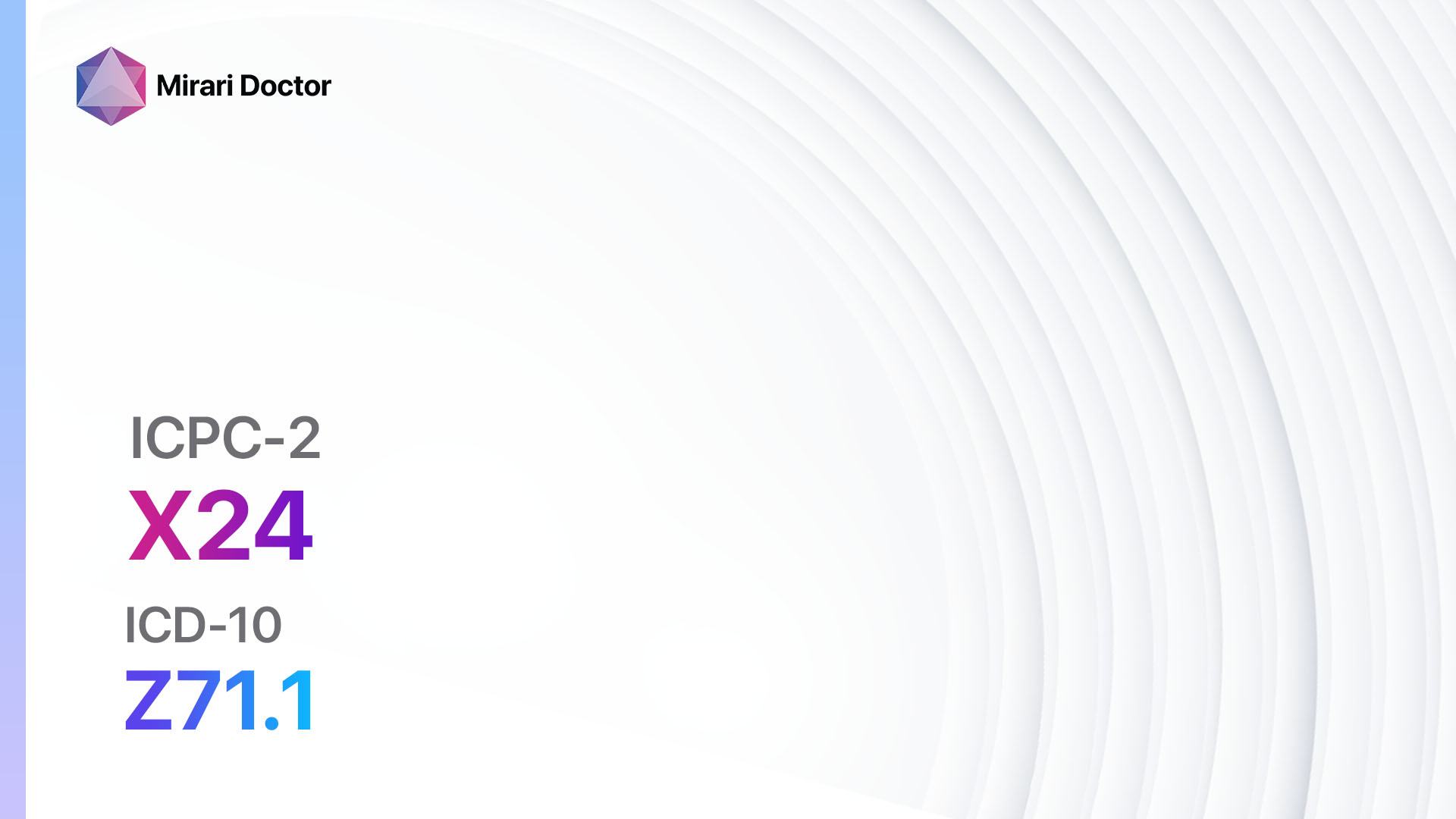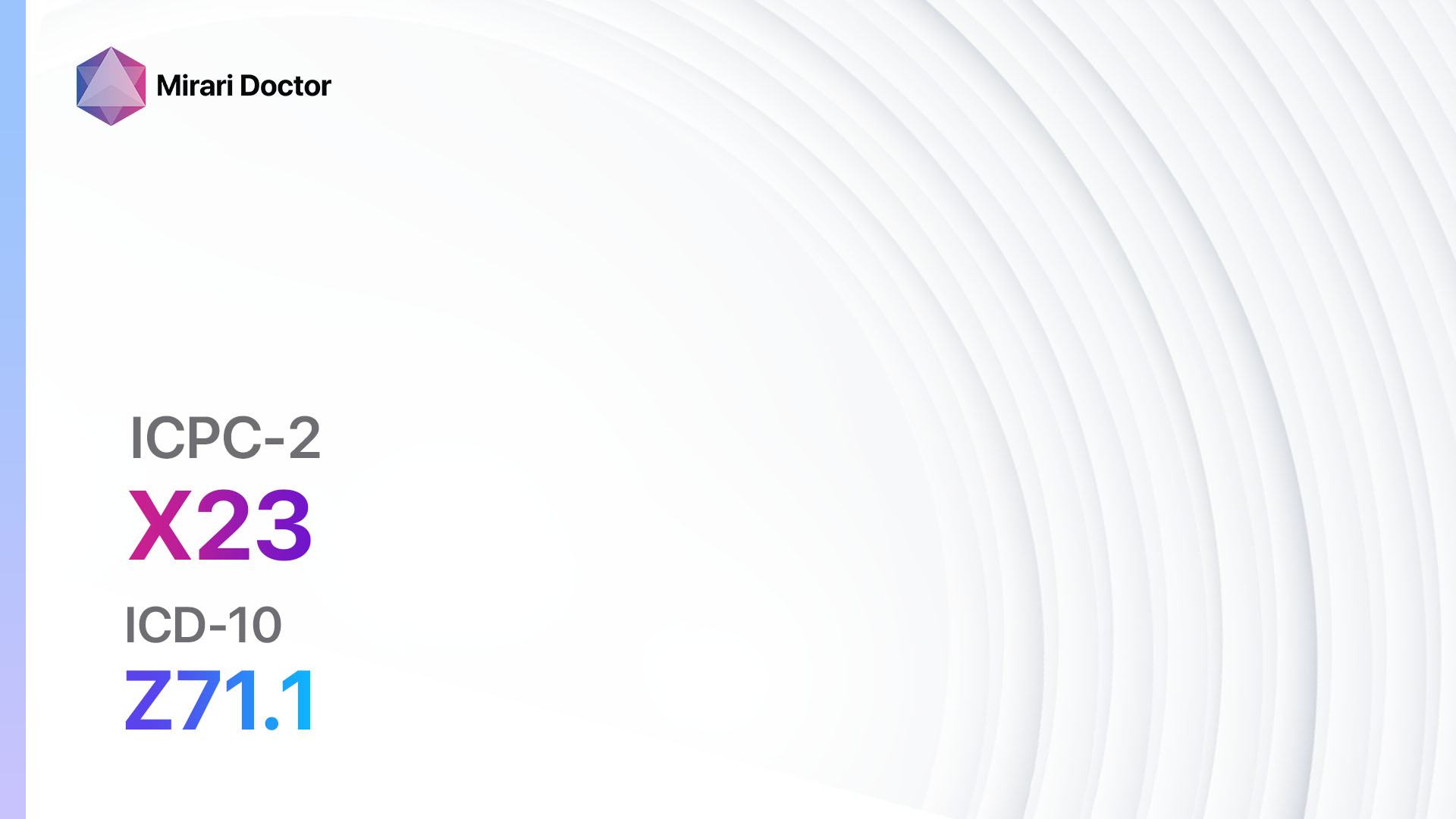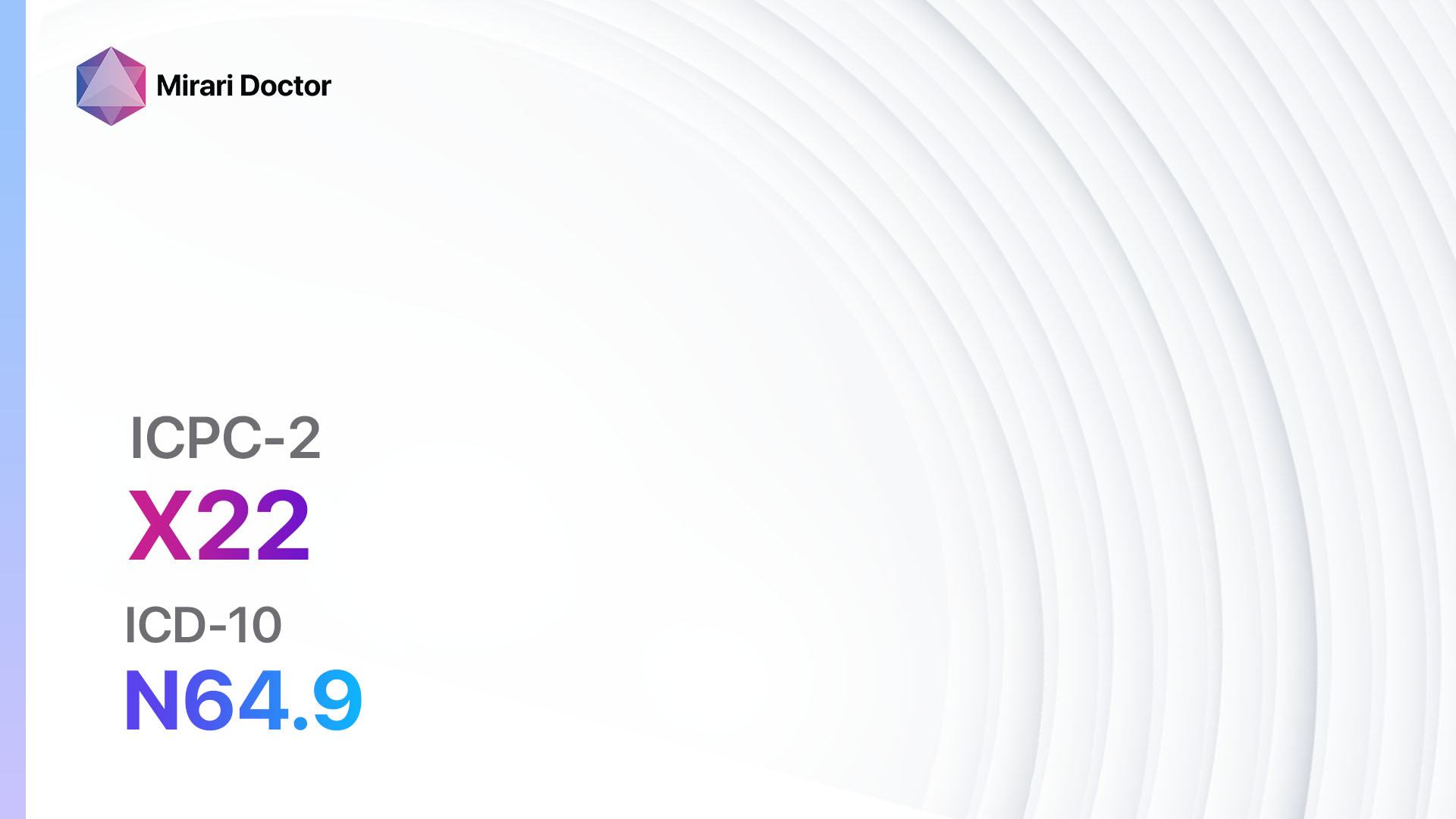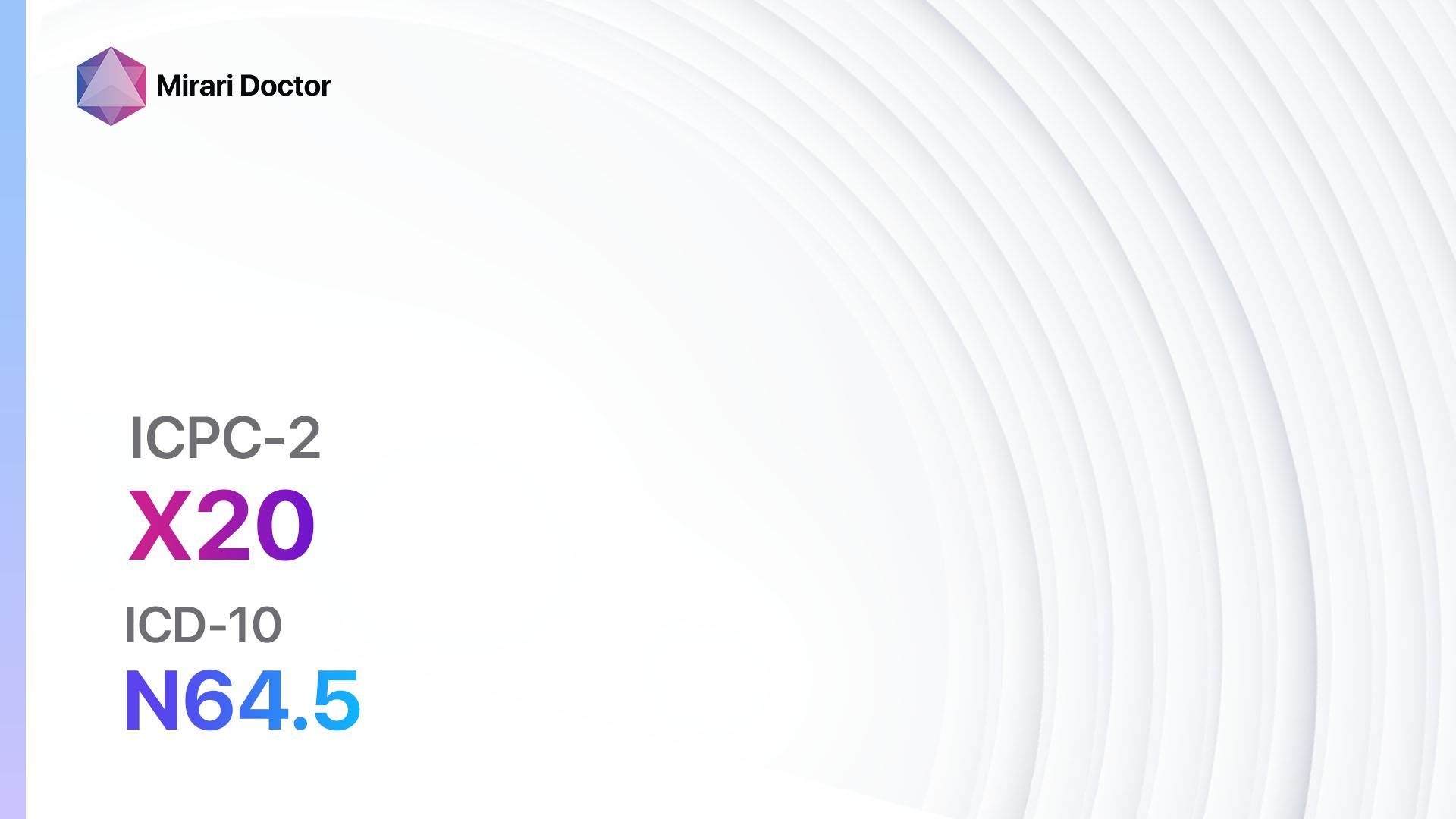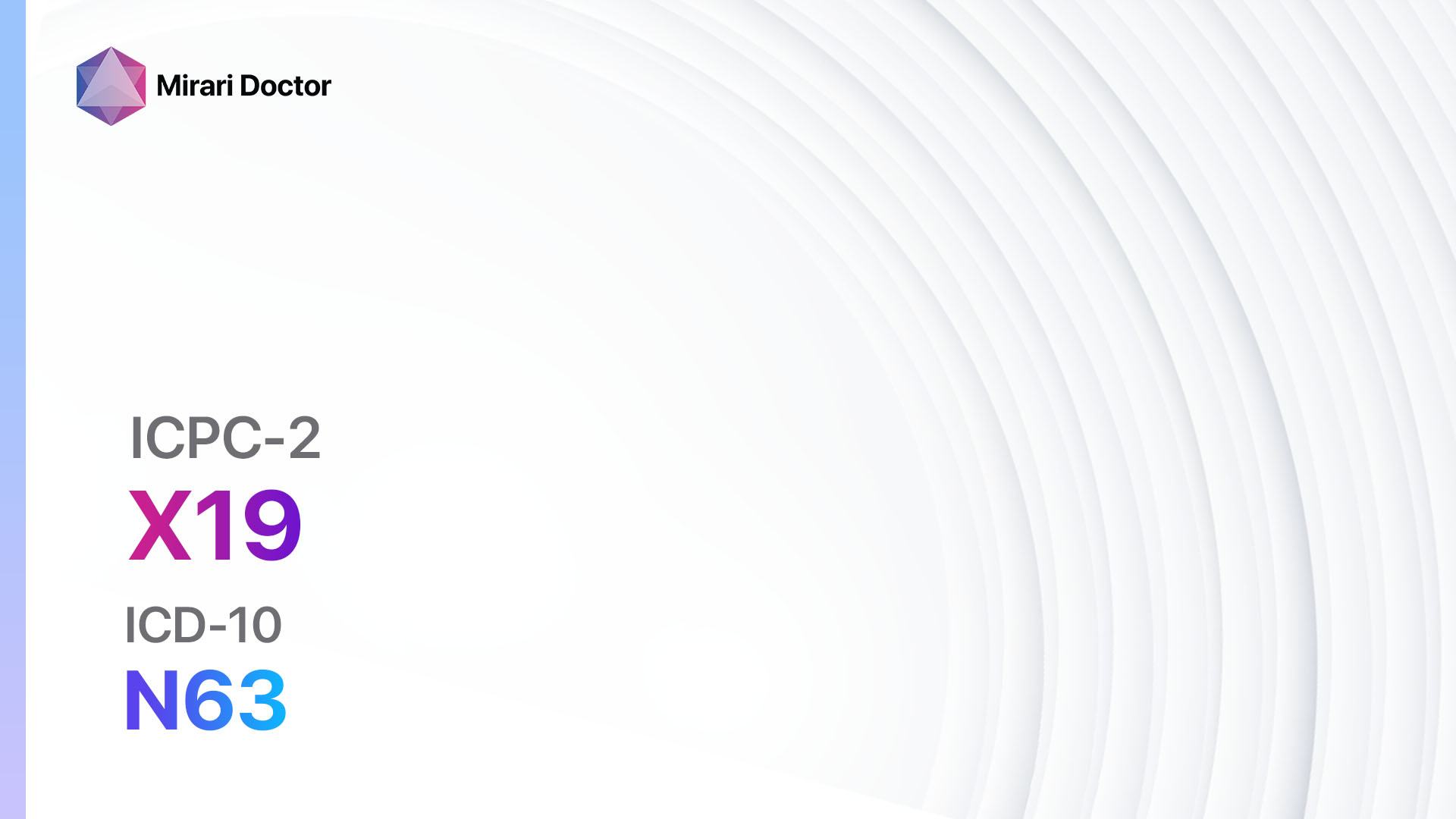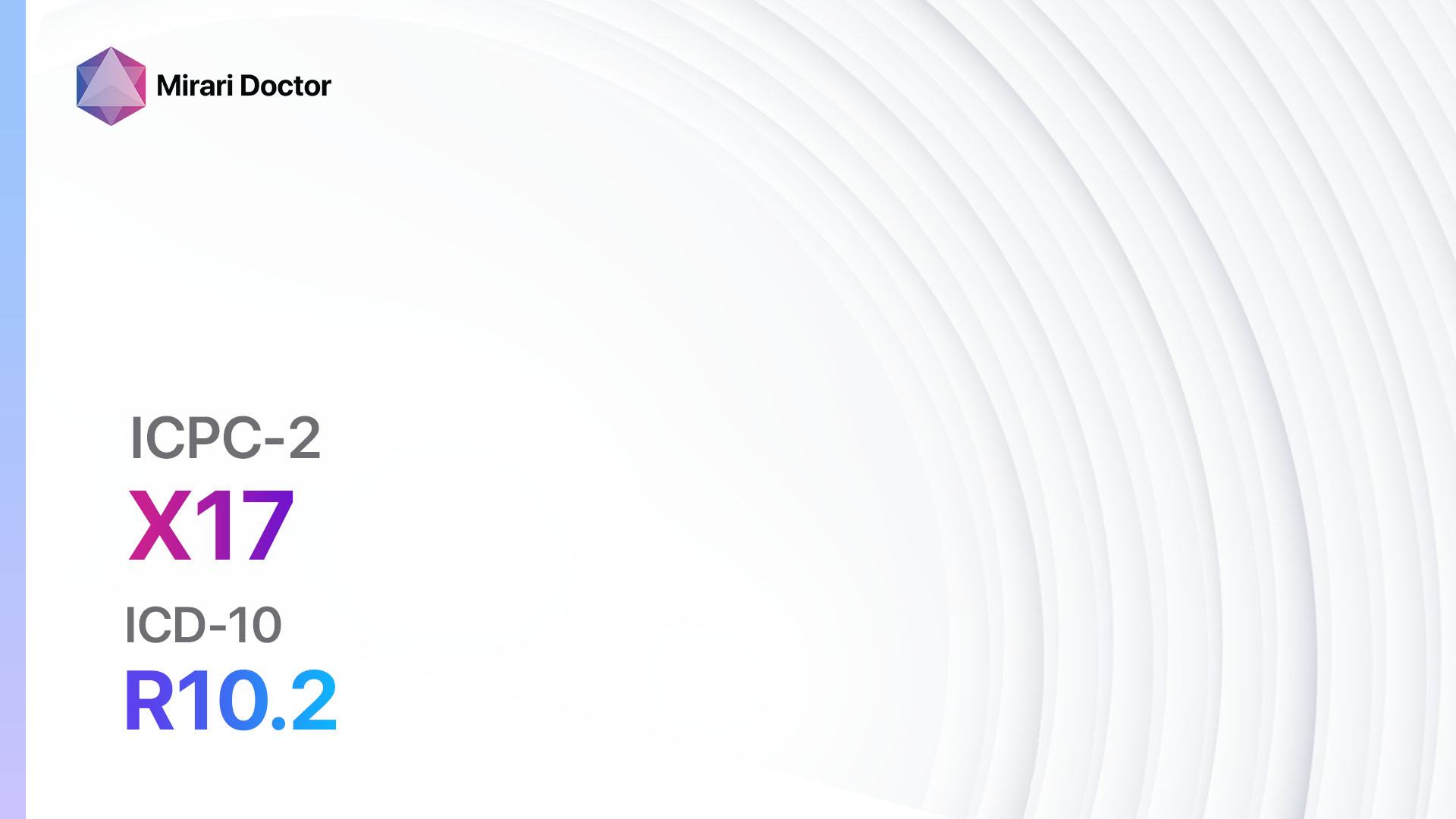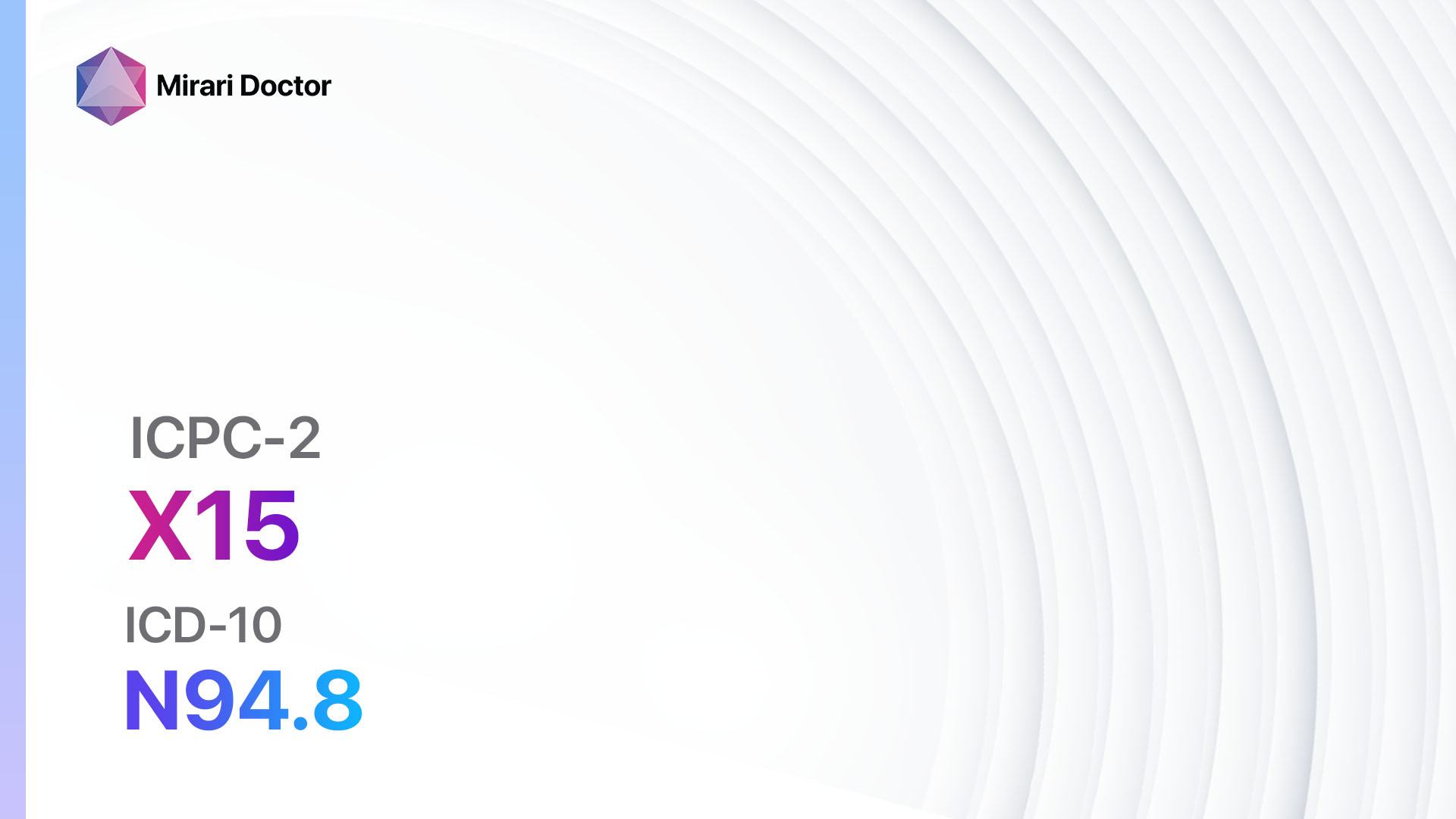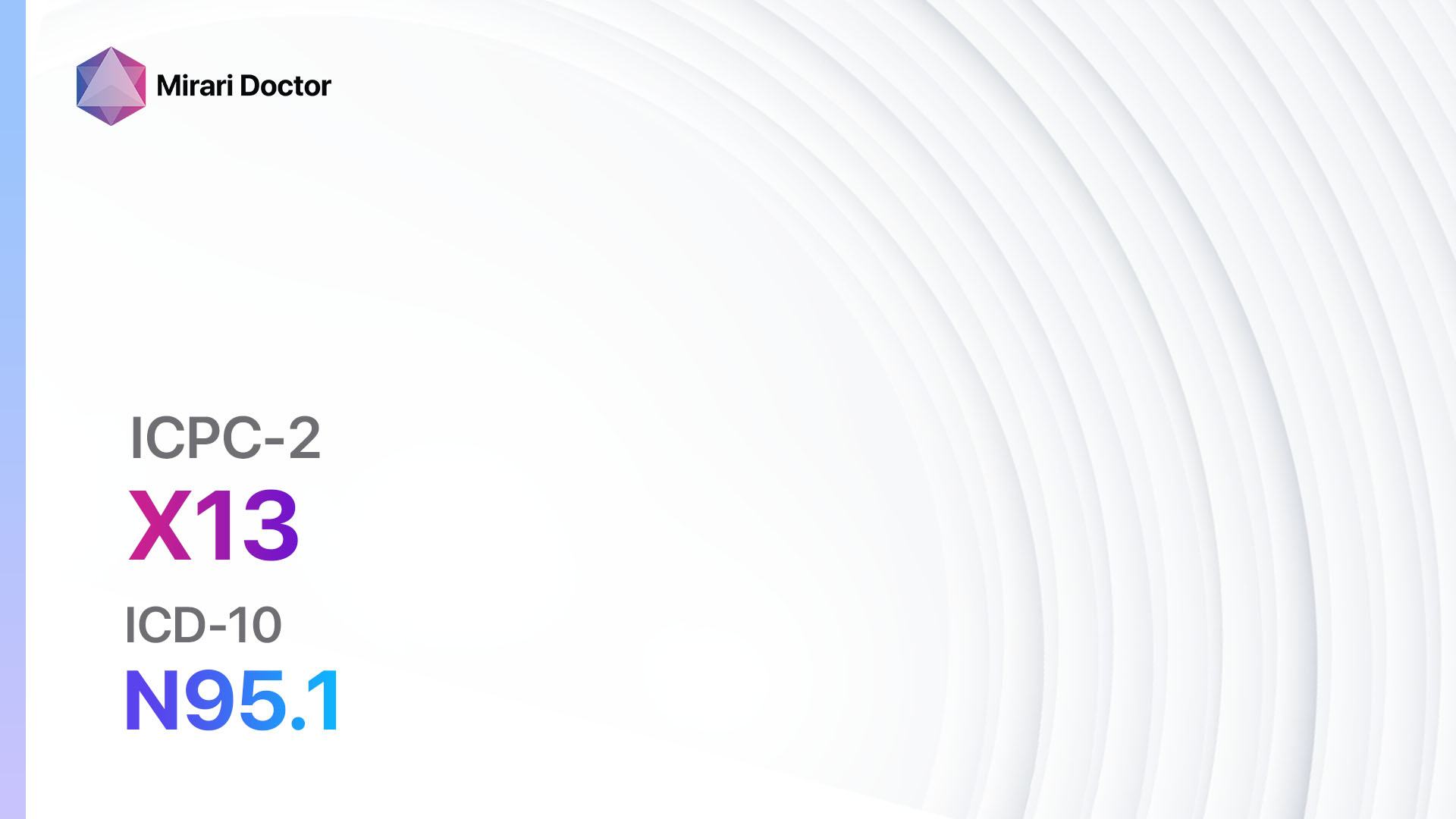
Introduction
Postcoital bleeding refers to vaginal bleeding that occurs after sexual intercourse. It can be a concerning symptom for patients and may indicate an underlying medical condition[1]. The aim of this guide is to provide healthcare professionals with a comprehensive approach to diagnosing and managing postcoital bleeding.
Codes
- ICPC-2 Code: X13 Postmenopausal symptom/complaint
- ICD-10 Code: N95.1 Menopausal and female climacteric states
Symptoms
- Vaginal bleeding after sexual intercourse
- Pain or discomfort during intercourse[2]
Causes
- Cervical polyps: Benign growths on the cervix that can bleed during intercourse
- Cervical ectropion: A condition where the cells from the inside of the cervix are present on the outside, which can cause bleeding
- Cervical inflammation or infection: Infections such as cervicitis or sexually transmitted infections can cause bleeding
- Cervical dysplasia: Abnormal cells on the cervix that can bleed
- Cervical or vaginal trauma: Injury to the cervix or vagina during intercourse
- Vaginal dryness: Lack of lubrication during intercourse can cause friction and bleeding
- Vaginal atrophy: Thinning and inflammation of the vaginal walls, often seen in menopausal women
- Endometrial polyps: Benign growths in the lining of the uterus that can bleed during intercourse
- Endometrial hyperplasia: Thickening of the uterine lining, which can cause bleeding
- Endometrial cancer: Malignant growth in the lining of the uterus
- Ovarian cysts: Fluid-filled sacs on the ovaries that can rupture and cause bleeding[3][4]
Diagnostic Steps
Medical History
- Gather information about the patient’s age, menstrual history, and sexual activity
- Ask about the frequency, duration, and severity of postcoital bleeding
- Inquire about any associated symptoms such as pain, discharge, or changes in menstrual patterns
- Assess for risk factors such as smoking, history of sexually transmitted infections, or use of hormonal contraceptives[5]
Physical Examination
- Perform a pelvic examination to assess the cervix, vagina, and uterus for any abnormalities
- Look for signs of inflammation, infection, or trauma
- Palpate the uterus and ovaries for any masses or tenderness[6]
Laboratory Tests
- Complete blood count (CBC) to assess for anemia or infection
- Pap smear to evaluate the cells of the cervix for abnormalities
- Sexually transmitted infection (STI) testing if indicated based on the patient’s history or examination findings[7]
Diagnostic Imaging
- Transvaginal ultrasound to visualize the uterus and ovaries for any structural abnormalities
- Hysteroscopy to directly visualize the uterine cavity and obtain biopsies if necessary[8]
Other Tests
- Endometrial biopsy if there is suspicion for endometrial hyperplasia or cancer
- Colposcopy if there are abnormal cervical cells on the Pap smear[9]
Follow-up and Patient Education
- Schedule a follow-up appointment to discuss the results of the diagnostic tests and develop a treatment plan
- Provide education on safe sexual practices, including the use of lubrication and communication with sexual partners
- Discuss the importance of regular gynecological examinations and Pap smears for early detection of any abnormalities[10]
Possible Interventions
Traditional Interventions
Medications:
Top 5 drugs for Postcoital bleeding:
- Oral contraceptives (e.g., Combined oral contraceptive pills):
- Cost: $20-$50 per month.
- Contraindications: History of blood clots, certain types of cancer, liver disease.
- Side effects: Nausea, breast tenderness, breakthrough bleeding.
- Severe side effects: Blood clots, stroke, heart attack.
- Drug interactions: Certain antibiotics, anticonvulsants.
- Warning: Increased risk of blood clots in smokers and women over 35 years old.
- Antibiotics (e.g., Azithromycin, Doxycycline):
- Cost: $10-$50 for a course of treatment.
- Contraindications: Allergy to antibiotics, liver disease.
- Side effects: Nausea, diarrhea, yeast infections.
- Severe side effects: Severe allergic reactions, liver damage.
- Drug interactions: Warfarin, certain antacids.
- Warning: Finish the full course of antibiotics as prescribed.
- Hormone therapy (e.g., Progesterone):
- Cost: $30-$100 per month.
- Contraindications: History of blood clots, certain types of cancer, liver disease.
- Side effects: Irregular bleeding, breast tenderness, mood changes.
- Severe side effects: Blood clots, stroke, heart attack.
- Drug interactions: Certain antibiotics, anticonvulsants.
- Warning: Regular monitoring of hormone levels may be required.
- Nonsteroidal anti-inflammatory drugs (NSAIDs) (e.g., Ibuprofen, Naproxen):
- Cost: $5-$20 for a bottle.
- Contraindications: History of stomach ulcers, kidney disease, bleeding disorders.
- Side effects: Upset stomach, heartburn, increased risk of bleeding.
- Severe side effects: Stomach ulcers, kidney problems, allergic reactions.
- Drug interactions: Blood thinners, certain antidepressants.
- Warning: Take with food to reduce the risk of stomach upset.
- Tranexamic acid:
- Cost: $50-$100 for a course of treatment.
- Contraindications: History of blood clots, certain types of cancer, kidney disease.
- Side effects: Nausea, diarrhea, headache.
- Severe side effects: Blood clots, allergic reactions.
- Drug interactions: Certain anticoagulants, hormonal contraceptives.
- Warning: Not recommended for patients with a history of blood clots.
Alternative Drugs:
- Vaginal estrogen cream: Used for postmenopausal women with vaginal atrophy.
- Antifungal creams: Used if a yeast infection is suspected.
- Corticosteroids: Used for inflammation or autoimmune conditions.
Surgical Procedures:
- Cervical polyp removal: Surgical removal of cervical polyps that are causing bleeding.
- Cervical conization: Removal of a cone-shaped piece of tissue from the cervix for further evaluation.
- Endometrial ablation: Destruction of the uterine lining to reduce or eliminate bleeding.
- Hysterectomy: Surgical removal of the uterus, often considered for severe cases or when other treatments have failed.
Alternative Interventions
- Acupuncture: May help improve blood flow and reduce pain. Cost: $60-$120 per session.
- Chelation therapy: Controversial treatment involving the administration of chelating agents to remove heavy metals from the body. Cost: $75-$150 per session.
- Hyperbaric oxygen therapy: Involves breathing pure oxygen in a pressurized chamber to increase oxygen delivery to tissues. Cost: $200-$300 per session.
- Herbal supplements: Some herbs, such as dong quai or shepherd’s purse, may have potential benefits for reducing bleeding. Cost: Varies depending on the specific supplement.
- Pelvic floor physical therapy: Can help strengthen the pelvic floor muscles and improve symptoms. Cost: $100-$200 per session.
Lifestyle Interventions
- Use of water-based lubricants during sexual intercourse to reduce friction and potential trauma. Cost: $5-$20 per bottle.
- Avoidance of irritants such as douches, scented soaps, or harsh laundry detergents. Cost: Varies depending on the specific products.
- Stress reduction techniques such as yoga or meditation to help manage any underlying stress or anxiety. Cost: Varies depending on the specific classes or programs.
- Regular exercise to improve overall health and circulation. Cost: Varies depending on the specific activities or gym memberships.
- Healthy diet rich in fruits, vegetables, and whole grains to support overall well-being. Cost: Varies depending on individual food choices.
It is important to note that the cost ranges provided are approximate and may vary depending on the location and availability of the interventions.
Mirari Cold Plasma Alternative Intervention
Understanding Mirari Cold Plasma
- Safe and Non-Invasive Treatment: Mirari Cold Plasma is a safe and non-invasive treatment option for various skin conditions. It does not require incisions, minimizing the risk of scarring, bleeding, or tissue damage.
- Efficient Extraction of Foreign Bodies: Mirari Cold Plasma facilitates the removal of foreign bodies from the skin by degrading and dissociating organic matter, allowing easier access and extraction.
- Pain Reduction and Comfort: Mirari Cold Plasma has a local analgesic effect, providing pain relief during the treatment, making it more comfortable for the patient.
- Reduced Risk of Infection: Mirari Cold Plasma has antimicrobial properties, effectively killing bacteria and reducing the risk of infection.
- Accelerated Healing and Minimal Scarring: Mirari Cold Plasma stimulates wound healing and tissue regeneration, reducing healing time and minimizing the formation of scars.
Mirari Cold Plasma Prescription
Video instructions for using Mirari Cold Plasma Device – X13 Postmenopausal symptom/complaint (ICD-10:N95.1)
| Mild | Moderate | Severe |
| Mode setting: 1 (Infection) Location: 0 (Localized) Morning: 15 minutes, Evening: 15 minutes | Mode setting: 1 (Infection) Location: 0 (Localized) Morning: 30 minutes, Lunch: 30 minutes, Evening: 30 minutes | Mode setting: 1 (Infection) Location: 0 (Localized) Morning: 30 minutes, Lunch: 30 minutes, Evening: 30 minutes |
| Mode setting: 2 (Wound Healing) Location: 0 (Localized) Morning: 15 minutes, Evening: 15 minutes | Mode setting: 2 (Wound Healing) Location: 0 (Localized) Morning: 30 minutes, Lunch: 30 minutes, Evening: 30 minutes | Mode setting: 2 (Wound Healing) Location: 0 (Localized) Morning: 30 minutes, Lunch: 30 minutes, Evening: 30 minutes |
| Mode setting: 3 (Antiviral Therapy) Location: 2 (Prostate & Uterus) Morning: 15 minutes, Evening: 15 minutes | Mode setting: 3 (Antiviral Therapy) Location: 2 (Prostate & Uterus) Morning: 30 minutes, Lunch: 30 minutes, Evening: 30 minutes | Mode setting: 3 (Antiviral Therapy) Location: 2 (Prostate & Uterus) Morning: 30 minutes, Lunch: 30 minutes, Evening: 30 minutes |
| Mode setting: 7 (Immunotherapy) Location:1 (Sacrum) Morning: 15 minutes, Evening: 15 minutes | Mode setting: 7 (Immunotherapy) Location:1 (Sacrum) Morning: 30 minutes, Lunch: 30 minutes, Evening: 30 minutes | Mode setting: 7 (Immunotherapy) Location:1 (Sacrum) Morning: 30 minutes, Lunch: 30 minutes, Evening: 30 minutes |
| Total Morning: 60 minutes approx. $10 USD, Evening: 60 minutes approx. $10 USD | Total Morning: 120 minutes approx. $20 USD, Lunch: 120 minutes approx. $20 USD, Evening: 120 minutes approx. $20 USD, | Total Morning: 120 minutes approx. $20 USD, Lunch: 120 minutes approx. $20 USD, Evening: 120 minutes approx. $20 USD, |
| Usual treatment for 7-60 days approx. $140 USD – $1200 USD | Usual treatment for 6-8 weeks approx. $2,520USD – $3,360 USD | Usual treatment for 3-6 months approx. $5,400 USD – $10,800 USD |
 |
|
Use the Mirari Cold Plasma device to treat Postcoital bleeding effectively.
WARNING: MIRARI COLD PLASMA IS DESIGNED FOR THE HUMAN BODY WITHOUT ANY ARTIFICIAL OR THIRD PARTY PRODUCTS. USE OF OTHER PRODUCTS IN COMBINATION WITH MIRARI COLD PLASMA MAY CAUSE UNPREDICTABLE EFFECTS, HARM OR INJURY. PLEASE CONSULT A MEDICAL PROFESSIONAL BEFORE COMBINING ANY OTHER PRODUCTS WITH USE OF MIRARI.
Step 1: Cleanse the Skin
- Start by cleaning the affected area of the skin with a gentle cleanser or mild soap and water. Gently pat the area dry with a clean towel.
Step 2: Prepare the Mirari Cold Plasma device
- Ensure that the Mirari Cold Plasma device is fully charged or has fresh batteries as per the manufacturer’s instructions. Make sure the device is clean and in good working condition.
- Switch on the Mirari device using the power button or by following the specific instructions provided with the device.
- Some Mirari devices may have adjustable settings for intensity or treatment duration. Follow the manufacturer’s instructions to select the appropriate settings based on your needs and the recommended guidelines.
Step 3: Apply the Device
- Place the Mirari device in direct contact with the affected area of the skin. Gently glide or hold the device over the skin surface, ensuring even coverage of the area experiencing.
- Slowly move the Mirari device in a circular motion or follow a specific pattern as indicated in the user manual. This helps ensure thorough treatment coverage.
Step 4: Monitor and Assess:
- Keep track of your progress and evaluate the effectiveness of the Mirari device in managing your Postcoital bleeding. If you have any concerns or notice any adverse reactions, consult with your health care professional.
Note
This guide is for informational purposes only and should not replace the advice of a medical professional. Always consult with your healthcare provider or a qualified medical professional for personal advice, diagnosis, or treatment. Do not solely rely on the information presented here for decisions about your health. Use of this information is at your own risk. The authors of this guide, nor any associated entities or platforms, are not responsible for any potential adverse effects or outcomes based on the content.
Mirari Cold Plasma System Disclaimer
- Purpose: The Mirari Cold Plasma System is a Class 2 medical device designed for use by trained healthcare professionals. It is registered for use in Thailand and Vietnam. It is not intended for use outside of these locations.
- Informational Use: The content and information provided with the device are for educational and informational purposes only. They are not a substitute for professional medical advice or care.
- Variable Outcomes: While the device is approved for specific uses, individual outcomes can differ. We do not assert or guarantee specific medical outcomes.
- Consultation: Prior to utilizing the device or making decisions based on its content, it is essential to consult with a Certified Mirari Tele-Therapist and your medical healthcare provider regarding specific protocols.
- Liability: By using this device, users are acknowledging and accepting all potential risks. Neither the manufacturer nor the distributor will be held accountable for any adverse reactions, injuries, or damages stemming from its use.
- Geographical Availability: This device has received approval for designated purposes by the Thai and Vietnam FDA. As of now, outside of Thailand and Vietnam, the Mirari Cold Plasma System is not available for purchase or use.
References
- Tarney, C. M., & Han, J. (2014). Postcoital Bleeding: A Review on Etiology, Diagnosis, and Management. Obstetrics and Gynecology International, 2014, 192087.
- American College of Obstetricians and Gynecologists. (2019). Abnormal Uterine Bleeding. Retrieved from//www.acog.org/patient-resources/faqs/gynecologic-problems/abnormal-uterine-bleeding
- Mayo Clinic. (2021). Vaginal bleeding. Retrieved from//www.mayoclinic.org/symptoms/vaginal-bleeding/basics/definition/sym-20050756
- NHS. (2021). What causes a woman to bleed after sex? Retrieved from//www.nhs.uk/common-health-questions/sexual-health/what-causes-a-woman-to-bleed-after-sex/
- Shapley, M., Jordan, K., & Croft, P. R. (2004). An epidemiological survey of symptoms of menstrual loss in the community. British Journal of General Practice, 54(502), 359-363.
- Casey, P. M., Long, M. E., & Marnach, M. L. (2011). Abnormal Cervical Appearance: What to Do, When to Worry? Mayo Clinic Proceedings, 86(2), 147-151.
- Workowski, K. A., & Bolan, G. A. (2015). Sexually transmitted diseases treatment guidelines, 2015. MMWR Recommendations and Reports, 64(RR-03), 1-137.
- Munro, M. G., Critchley, H. O., & Fraser, I. S. (2011). The FIGO classification of causes of abnormal uterine bleeding in the reproductive years. Fertility and Sterility, 95(7), 2204-2208.
- Massad, L. S., Einstein, M. H., Huh, W. K., Katki, H. A., Kinney, W. K., Schiffman, M., … & Lawson, H. W. (2013). 2012 updated consensus guidelines for the management of abnormal cervical cancer screening tests and cancer precursors. Journal of Lower Genital Tract Disease, 17(5 Suppl 1), S1-S27.
- American Cancer Society. (2021). Cervical Cancer Screening Guidelines. Retrieved from//www.cancer.org/cancer/cervical-cancer/detection-diagnosis-staging/cervical-cancer-screening-guidelines.html
Related articles
Made in USA


